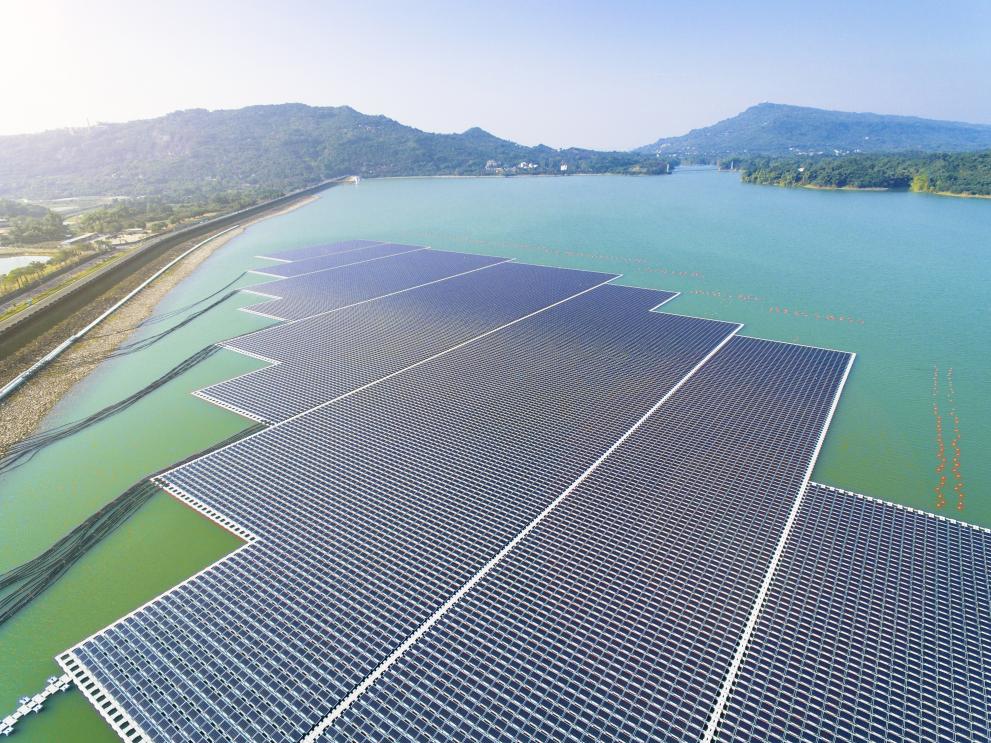
Solar panels, mounted on rooftops or as part of solar farms, are a common sight today…but did you know they can also be mounted on platforms floating on water surfaces, such as reservoirs, lakes or seas? Installing floating photovoltaics (PV) on 1% of the area of African hydropower reservoirs, could double the current hydropower installed capacity and increase by 58% the electricity output, according to a new JRC study.
The African continent is highly dependent on hydropower: 90% of the electricity generation in Ethiopia, Malawi, Mozambique, Namibia and Zambia comes from hydropower. However, Africa also suffers from serious water scarcity and the long and severe droughts in the last few years have affected many regions in the continent, with dramatic consequences on hydroelectric generation. At the same time, Africa has an excellent solar potential with a yearly sum of solar irradiation exceeding 2000 kWh/m2 on 85% of the continent (solar irradiation in EU Member States ranges between 1100 and 2000 kWh/m2).
In a recent published study in the scientific journal Renewable Energy, JRC scientists analysed the potential of installing floating PV in the largest 146 hydropower reservoirs in the African continent. Different coverages and floating structures were analysed, estimating the floating PV installed capacity, electricity production, evaporation savings and the potential extra hydroelectricity generated by the water savings.
The installation of floating PV systems in hydropower reservoirs presents numerous benefits:
- One of the most important advantages of these types of hybrid systems is easy access to the grid due to the presence of the hydropower plant.
- Floating PV can help compensate hydropower output during dry periods, while hydropower, with a more stable and flexible operation, can compensate for unstable and intermittent PV output during the wet season. A similar day-night complementarity in operations can take place, as well as during peak hours in which hydropower can contribute with the water saved during the day, behaving as a “virtual battery”.
- Floating PV can help reduce water loss from evaporation in the reservoirs. In 2016, water losses associated with hydropower in Africa were estimated at 42 billion m3, more than 30 times the amount of water used to generate electricity by all the other energy technologies combined in the continent.
- It avoids land use, which is especially important in densely populated regions.
Due to low hydropower productivity and high solar irradiation, South Africa and countries in Northern Africa get a greater advantage than other African regions from the installation of floating PV, doubling in some cases the electricity produced by hydropower with small coverages (between 1% and 5%). Nevertheless, the potential in other African regions with higher hydropower capacity factors is also significant, increasing the electricity output by more than 50% with coverages of 4% on average.
Floating PV is still in its infancy, but these results show that there is an enormous potential in the African continent by hybridising the existing hydropower plants. Considering the increasing energy needs in Africa, the study suggests that diversification of the renewable energy portfolio in Africa is feasible, increasing Africa’s resilience to climate change, reducing energy supply risk and providing new power infrastructure to the continent which has the lowest rate of electricity access (54%) in the world.

Related Content
Renewabe Energy journal article: Assessment of floating solar photovoltaics potential in existing hydropower reservoirs in Africa
Applied Energy journal article: Freshwater use of the energy sector in Africa
Details
- Publication date
- 26 February 2021
